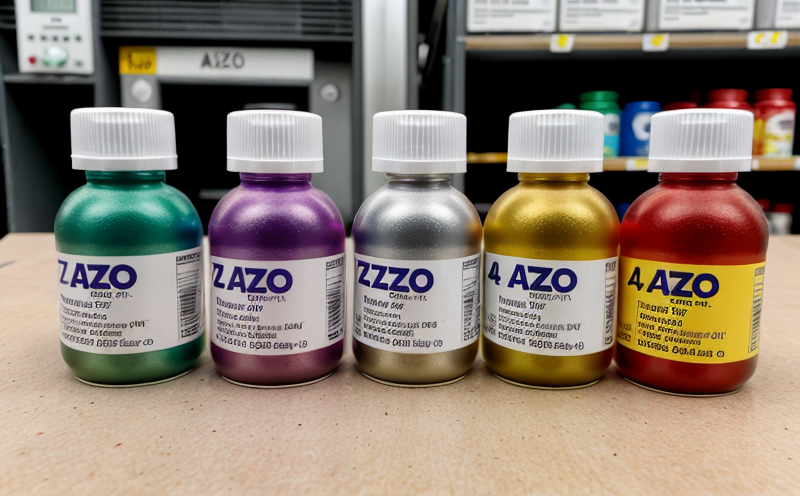Testing of zinc levels in textile finishing processes
In recent years, the integration of metal ions into textile finishing has gained significant attention due to their role in enhancing fabric properties such as colorfastness, durability, and antimicrobial efficacy. Among these metals, zinc plays a vital part in many industrial applications. This service focuses specifically on the testing of zinc levels within textile finishing processes using precise analytical techniques.
The importance of monitoring zinc content cannot be overstated, especially given increasing concerns over environmental impact and occupational health. Excessive zinc can lead to issues such as soil pollution, water contamination, and potential risks to human health through prolonged exposure during manufacturing or use. Therefore, accurate measurement and control are essential not only for compliance but also for ensuring product safety and quality.
Our laboratory employs advanced analytical methods like Inductively Coupled Plasma Mass Spectrometry (ICP-MS) to determine zinc concentrations with high precision. This approach allows us to detect even trace amounts of zinc, which is crucial given modern regulatory standards aimed at minimizing harmful effects from minute quantities.
For effective sample preparation, textiles undergo thorough rinsing followed by digestion steps where appropriate to convert all forms of zinc into aqueous solutions suitable for analysis. Samples may also need dilution depending on initial concentrations detected during preliminary checks. Once processed, the samples are analyzed according to established protocols ensuring consistent results across multiple batches.
The findings from these analyses provide valuable insights that can guide adjustments in formulation recipes or process parameters aimed at optimizing zinc usage while maintaining desired performance characteristics. By doing so, manufacturers ensure compliance with local regulations and international guidelines such as ISO 21963-4:2018 which specifies requirements for textile finishing agents including limits on heavy metals content.
Understanding how different types of finishes affect zinc retention within the fabric matrix helps tailor solutions that balance performance improvements against potential environmental impacts. This knowledge also supports efforts towards developing more sustainable practices throughout the supply chain, from raw material sourcing to final product disposal.
Scope and Methodology
| Aspect | Description |
|---|---|
| Sample Preparation | Textiles are first cleaned and then digested using appropriate acids if necessary before undergoing analysis. |
| Analytical Technique | We use Inductively Coupled Plasma Mass Spectrometry (ICP-MS) for accurate quantification of zinc levels down to parts per billion. |
| Acceptance Criteria | The maximum allowable limit is set according to relevant standards like ISO 21963-4:2018, ensuring compliance with international best practices. |
International Acceptance and Recognition
The testing methods we employ for measuring zinc levels are internationally recognized and widely accepted by regulatory bodies around the world. Compliance with these standards not only ensures consistency in results but also facilitates smoother international trade. For example, adhering to ISO 21963-4:2018 helps textile producers meet requirements set forth by countries like the European Union under its Reach regulation.
Our laboratory’s proficiency in this area is demonstrated through successful accreditation against recognized standards such as ISO/IEC 17025. This certification guarantees that our testing procedures meet stringent quality assurance criteria, providing clients with confidence in the reliability of their results.
Beyond mere compliance, understanding and implementing these guidelines allows textile manufacturers to stay ahead of evolving trends in sustainable manufacturing practices. By ensuring adherence to global norms, companies can build trust with consumers who increasingly demand eco-friendly products.
Environmental and Sustainability Contributions
The careful management of zinc levels within textile finishing processes contributes significantly to environmental sustainability by reducing waste generation and minimizing the release of harmful substances into ecosystems. Effective monitoring helps identify opportunities for process optimization, thereby decreasing unnecessary resource consumption.
Incorporating sustainable practices into textile production extends beyond just controlling metal concentrations; it encompasses broader strategies aimed at reducing overall ecological footprint. For instance, recycling wastewater streams containing trace amounts of zinc can recover valuable materials while preventing them from entering natural water bodies.
Moreover, by promoting responsible sourcing of raw materials and energy-efficient operations, companies adopting rigorous testing protocols like ours contribute positively towards achieving global sustainability goals. Such initiatives reflect a commitment to long-term viability not only for businesses but also for society at large.





